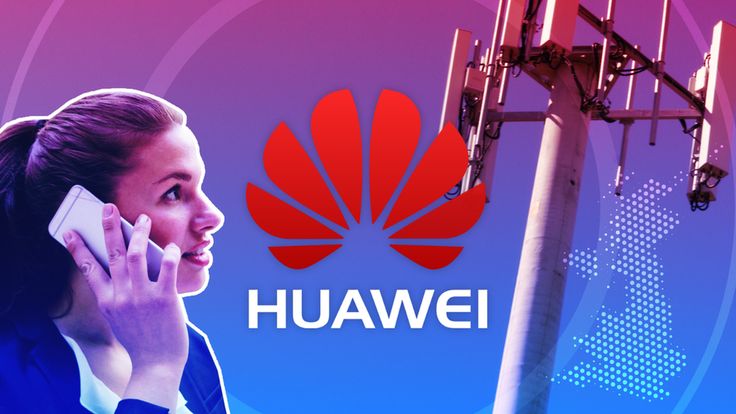Althought the low-altitude economy’s has yet to take off, Huawei’s 5.5G technology could provide the crucial lift-off for this promising sector.
Since the inception of drones, consumers and businesses alike have caught a glimpse of a future where services are delivered from the sky.
This tantalising prospect has sparked imaginations and driven innovation across various sectors. However, the path to realising this aerial utopia has been fraught with challenges.
The physical components making this possible have largely been publicly and commercially available since the 2010s. But the real thing holding back drones and the low-altitude economy are the ethereal and immaterial.
However, Chinese tech titan and ICT infrastructure specialist Huawei has developed a raft of solutions that can usher in the low altitude economy and unlock new business opportunities. And it begins with 5.5G
Issues in the air
Drones, for all their potential, can be precarious devices. Drones operate using a combination of Wi-Fi and cellular connectivity. The cellular aspect typically relies on roaming M2M (machine-to-machine) SIM cards, enabling communication between devices without human intervention.
These SIM cards allow drones to continuously monitor networks for optimal connections regardless of their location within a coverage area. Yet, should this connection be lost, dropped, or slowed down, a drone may veer off course or malfunction mid-flight.
Such consequences could be disastrous, especially if it’s carrying a large package of hot food or drink. A drone outside of an area of connectivity may be impossible to control and could crash.
These risks become even more pronounced in urban environments where the margin for error is minimal, and the potential for damage or injury is significant.
Risks like these are why only the very large enterprises have dared to venture into drones as a service.
Amazon, perhaps the most famous example of drones being used for economic activity, began drone-delivered parcels in 2022.
Currently, they can deliver to customers, dropping some items off in their gardens. However, after two years, the concept has remained localised to key areas in California and a newly announced area in Arizona.
Problems have persisted, with Amazon encountering challenges in optimising drone performance and ensuring their reliability under varying weather conditions, payload capacities, and distances.
The challenge, therefore, lies in ensuring the connectivity drones need to stay on course is available, allowing systems to track them and rectify any issues in direction quickly.
5.5G: unlocking the low altitude economy
Huawei’s 5.5G technology represents a significant leap forward in addressing these challenges.
With downlink speeds of 10Gbps and uplink speeds of 1Gbps – basically a 10x upgrade on 5G in terms of speed – 5.5G enables unprecedented control over drone operations. This enhanced connectivity provides the foundation for more reliable and precise drone navigation.
Moreover, 5.5G’s ability to support up to 100 billion connections means drones can be rolled out en masse in cities, moving beyond a handful of trial drones.
This increased connectivity also addresses regulatory issues that have previously hindered drone deployment. With constant, better connectivity, network providers are better able to install geofences, and drones can more easily abide by these restrictions and avoid any issues of loss of control by going out of bounds.
Huawei’s solutions have already helped make drone deliveries a reality. In Shenzhen, China, visitors to several parks can place orders for coffee, tea, and snacks, which are then delivered by drones to designated drop-off points.
One such business, Meituan Takeaway, delivered 120,000 orders via drones in Shenzhen, with the company predicting 150 million orders will be delivered by drones annually by 2030.
The tech underpinning the talk
Huawei has developed solutions both last year, and recently announced at its mobile broadband MBBF event, that power the connectivity that underpins a low-altitude economy.
Announced at the event, Huawei’s Blade AAU X technology offers significant potential for enhancing commercial drone delivery operations in urban settings.
Offering the industry’s largest mmWave AAU with more than 2,000 antenna elements, this AAU supports a beam density four times that of competing modules, breaking through the mmWave coverage bottleneck.
By providing comprehensive coverage across all sub-6 GHz bands with a single antenna, it ensures stable connections and improved signal strength throughout a city’s complex environment.

The enhanced beamforming algorithm allows for continuous coverage with 10Gbps speeds, even in mobility scenarios. This is particularly important for drone operations, as it ensures stable connectivity during flight.
This technology enables more reliable drone control, precise navigation, and real-time tracking, which are essential for safe and efficient parcel deliveries.
The Blade AAU X’s ability to reduce infrastructure needs whilst maximising spectral efficiency makes it a cost-effective solution for companies looking to scale up their drone delivery services.
Huawei is also bringing added sensing capabilities to drones, which can help in navigation and avoiding accidents.
Working with Yunnan Mobile Corporation, Huawei has completed the testing of the first 5G-A synaesthesia fusion technology in Erhai Lake, West China, with the aim of boosting low-altitude scenarios in the province.
Its 5.5G synaesthesia solution uses a 4.9GHz frequency band, a transmitter, and a receiver to test the base station functionalities and aims to integrate perception capabilities on communication systems and use wireless signals to provide real-time environmental awareness.
The future of the low altitude economy
As we look to the future, the potential of the low altitude economy increasingly takes form.
With the advancements in 5.5G technology being not just incremental improvements but a paradigm shift, what was previously posed a challenge has melted away.
Enhanced connectivity and real-time data capabilities allow drones to operate more safely and efficiently, addressing some of the regulatory challenges that have previously hindered their deployment and allowing us to really reimagine how we utilise airspace.
Huawei has laid the groundwork for unlocking the low altitude economy, the onus is now on telcos to take advantage of these cutting-edge solutions.
With telco investment, business vision, and Huawei solutions, we can bring about the new age of UAVs and unlock the benefits it brings for the economy and society.



